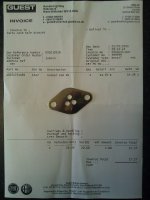A good caveat, indeed.Yes; you have demonstrated a great example of when it's a good idea to use a caveatbeing:
"....unless the modification is recommended by the engine manufacturer"
&
But .... But .... Shirley that's NOT "a modification recommended by the engine manufacturer", so Shirley that can't be "a proper repair".Interesting, I fitted the swirl gasket on the 'wrong' side based on what Fiat techs have told me.
I fitted mine next to the stop valve and from my positive experience of zero EGR issues this may well be the best place
PS ... Sorry, Argo, I couldn't resist the temptation for a spot of lighthearted monkeying around.
Regards
Bobbejaan
Last edited:



